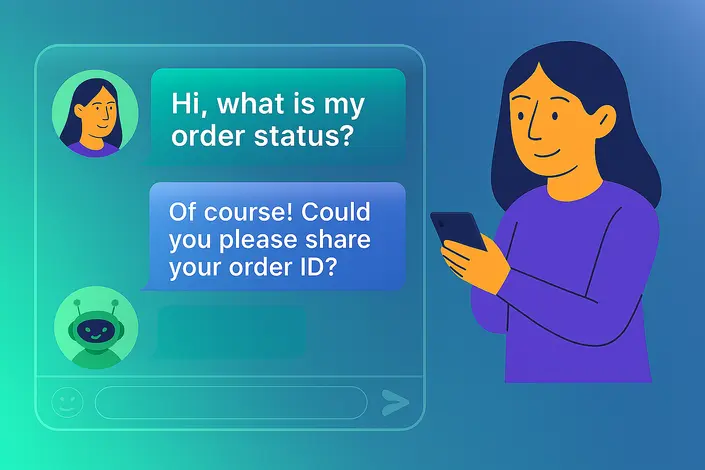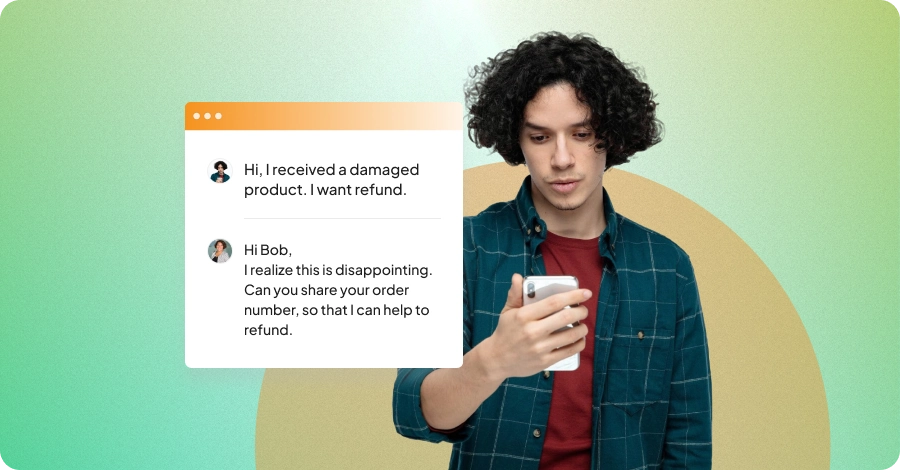The Customer Journey Stages: Definition, Benefits, and Strategies
- January 5, 2022
- 18 mins read
- Listen
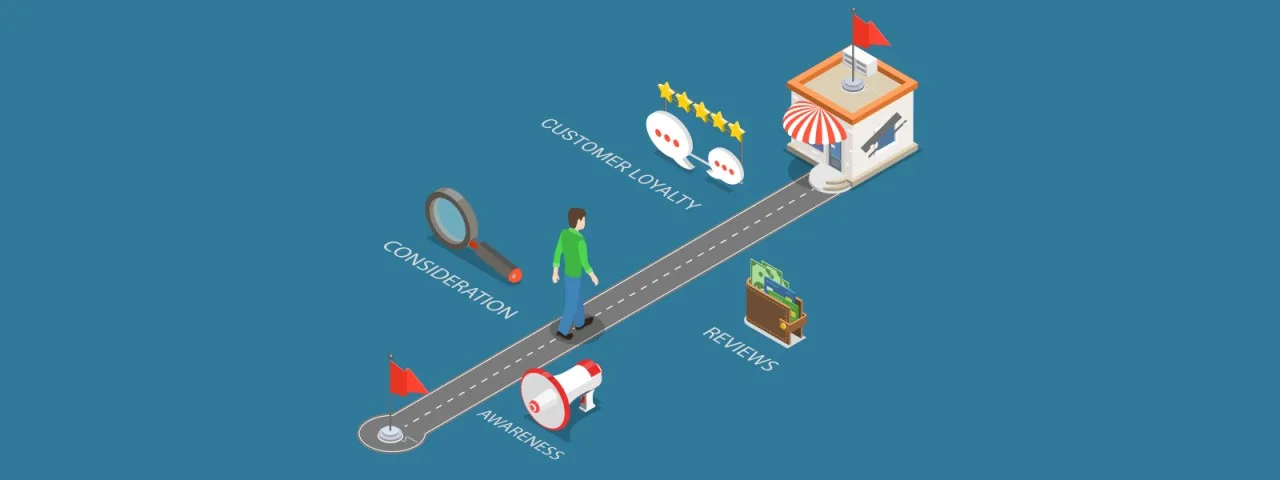
Customers often prefer a brand that understands them well.
They love to stick with a business that offers them value and provides great experiences along the journey.
So, the question is – do you understand your customers well? If you don’t, how can you provide value to them, or how can you deliver great experiences?
This is where a lot of businesses falter — they neither bother to understand their customers nor take steps to know their journey.
You should not make such a mistake.
After all, customer journey stages are often the sum total of all the interactions from the initial research stage to post-purchase. They are made up of various steps and touchpoints.
So, the more you focus on the journey, the more you will understand customers and their experiences.
Once you are aware of the different stages of the journey, you can take steps and offer value at each stage of the way.
In this post, we will discuss stages of the customer journey and how to deliver value in each step.
What is a Customer Journey?
A customer journey refers to all the interactions and experiences that a customer goes through while engaging with a company, its product, service, or brand. It includes every touchpoint – right from the initial awareness and consideration to purchase. A customer journey also includes usage and follow-up.
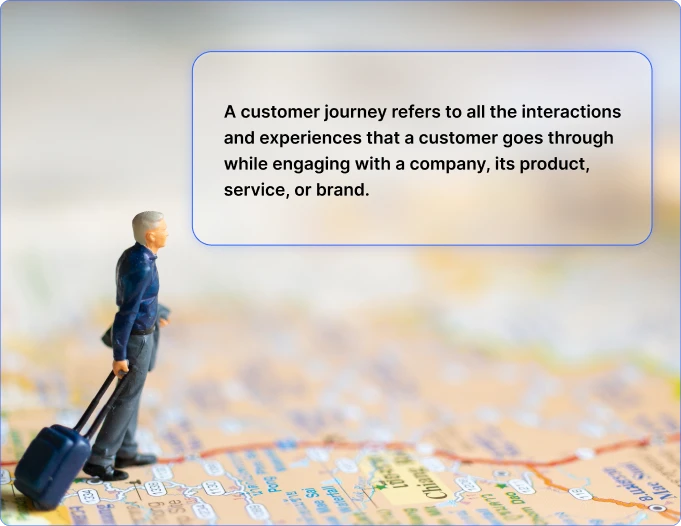
In other words, the customer journey can also be referred to as a series of steps that lead to a purchase and eventually culminate with customer loyalty. This journey is important for businesses to understand their customer needs and experiences at every touchpoint.
Understanding and optimizing the customer journey is vital to providing customers with a positive experience. A business that masters the customer journey can design the kind of customer experience that will enhance customer loyalty and long-term relations.
What are the Customer Journey Stages?
The customer journey stages serve as a framework for understanding the customer’s experience and journey from the awareness stage through to the loyalty stage. Businesses can use these stages to tailor their sales, marketing, and customer service efforts and better meet customer needs
Knowing the customer journey and perfecting its stages is always key to staying competitive in the industry. The more you know about the customer touchpoints, the more likely you are to serve the customers better. So, you need to understand each of the customer journey stages thoroughly to strike a perfect balance between what they want and what you deliver.
5 Stages of the Customer Journey
The five stages of the customer journey are:
- Awareness – The customer realizes that they have a need or a problem. So, they start searching for solutions. In this stage, they may become familiar with your business through one of the channels, including advertising and word-of-mouth.
- Consideration – The consumer has done the initial research and is now actively considering options to choose from. In this stage, your products or services are compared with others.
- Purchase – The buyer has explored the options available and is ready to make the purchase. They look for reviews, testimonials, or any piece of content that helps them bolster their decision to purchase. So, make sure you add value to customer interactions at this vital stage.
- Retention – The customer is now yours. You have got them beyond the customer journey purchase stage. They use the product and your focus should be on keeping them with you forever. So, the right strategy is to seek their feedback and provide any post-purchase value they need
- Advocacy – The customer is happy with your product or service. And they won’t mind spreading the word to family or friends. Winning advocacy is always one of the finest customer journey stages examples where you encourage existing buyers to say great things about your products or services.
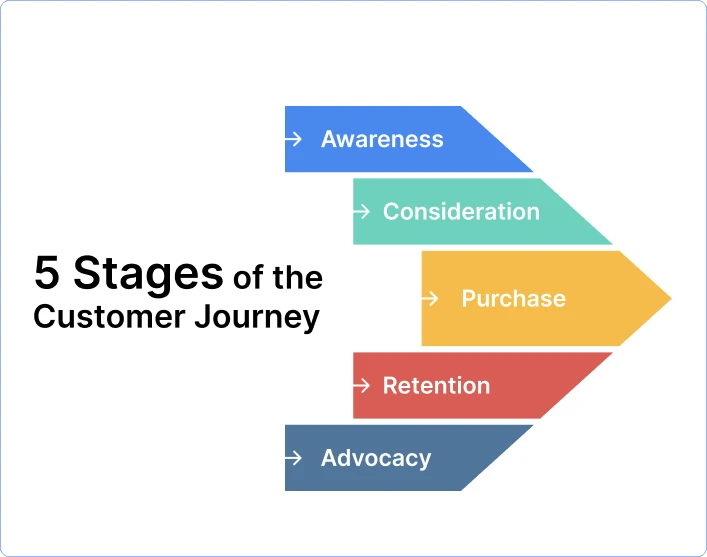
What’s the Difference Between the Customer Journey and the Buyer’s Journey?
The terms “customer journey” and “buyer’s journey” are not the same but are closely related. Each one focuses on slightly different facets of the overall process of a business. While the customer journey centers on the entire relationship between a customer and a brand, the buyer’s journey gears more toward the process leading up to the purchase.
A deep knowledge of both journeys is essential for businesses to effectively engage with customers and provide value at each stage of the journey. The better a business understands the customer and buyer’s journeys, the more opportunities it can foresee in meeting the needs of customers and winning their loyalty.
Here are some of the key differences between the customer journey and the buyer’s journey –
Customer Journey
- It encompasses a customer’s entire experience with a business
- It includes all the journey stages, from the initial awareness to post-purchase and beyond.
- It considers all touchpoints and interactions irrespective of their relation with the purchase decision.
- It focuses on the holistic relationship between the brand and the customer, including factors such as loyalty, advocacy, and retention.
- It dwells more on customer experience at each touchpoint.
|
Customer Journey |
Buyer’s Journey |
|
Encompasses a customer’s entire experience with a business |
Does not encompass a customer’s entire experience with a business |
|
Includes all journey stages, from initial awareness to post-purchase and beyond |
Specifically refers to the process contributing to the purchase decision by a customer |
|
Considers all touchpoints and interactions irrespective of their relation with the purchase decision |
More sales-focused compared to the customer journey |
|
Focuses on the holistic relationship between the brand and the customer, including factors such as loyalty, advocacy, and retention |
Focuses on understanding customer’s needs and motivations during the purchase process |
|
Dwells more on customer experience at each touchpoint |
Concerns the stages that have a direct relation to the purchase decision |
Buyer’s Journey
- It does not encompass a customer’s entire experience with a business.
- It specifically refers to the process contributing to the purchase decision by a customer.
- It is more sales-focused compared to the customer journey.
- Its focus is more on understanding customer’s needs and motivations during the purchase process.
- It concerns the stages that have a direct relation to the purchase decision.
Why are the Customer Journey Stages Important?
For customers, experience matters a lot. They often stick with a business and spend more when the experience is excellent. For businesses, it’s first important to understand what customer needs and then deliver on that. Customer journey stages help in understanding customer behavior better.
Here are the reasons why the customer journey stages are important –
- To understand customer behavior – A business can map out the customer journey stages to gain insights into how customers interact with their products or services. This helps them understand customer behavior, pain points, and preferences.
- To identify areas for improvement – Each stage of the customer journey is an opportunity to know what customers like and what not. Based on that, a business can analyze the friction in the journey and identify areas for improvement for each touchpoint.
- To adopt tailored marketing and sales approaches– To effectively engage and influence customers, a business needs to understand the customer journey in detail. A customer journey analysis is the key to customizing marketing and sales strategies to the specific needs of customers.
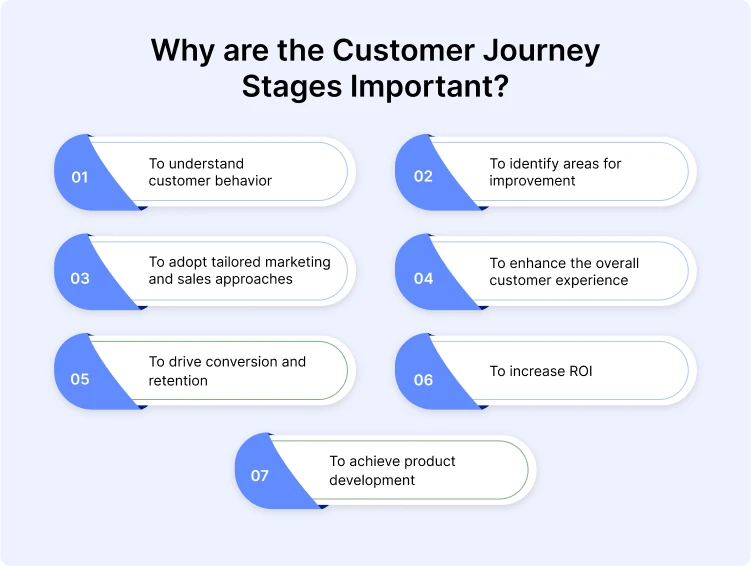
- To enhance the overall customer experience – An analysis of the customer journey stages is essential for identifying friction in the customer experience. This friction can lead to pain points. Addressing these issues can result in an improved overall customer experience.
- To drive conversion and retention – Customers seamlessly move through the sales funnel when the customer journey is well-designed and has no friction. This ultimately results in increased conversion rates. When conversion rates are high, businesses can leverage it and foster long-term relationships with customers.
- To increase ROI – Returns on investment (ROI) for marketing, sales, and customer service efforts are higher when customer journey stages are optimized. This also leads to happy customers who bring more revenue and contribute to growth.
- To achieve product development – Customer journey stages can offer insights into customer needs and preferences. Those insights can help businesses understand how customers engage with products and services at each stage. Based on that knowledge, product development can be achieved.
How Can You Improve Each Customer Journey Stage?
As a marketer, it’s always your duty to reach potential prospects in all stages of a customer journey and ensure them a good experience with your brand. You need proper planning and some content ready to guide customers through different stages. After all, 70% of buyers have their needs defined on their own before engaging with a sales representative.
You need the right plan of action to improve each customer journey stage like the below:
1. The Awareness Stage: Provide Information and Build Trust
In the awareness stage, customers look for information as they have a need or a problem. So, your focus should be on providing the information to solve the problem.
Naturally, this stage of the buyer’s journey will also be your first impression and you need to strategize well to add value to customers.
To make a good first impression, you need to know first how more than 75% of internet users read blogs regularly to get information about a product or a brand.
Apart from sharing information, there has to be an attempt to build trust with customers. And if you couldn’t do that, all the other stages would cease to matter.
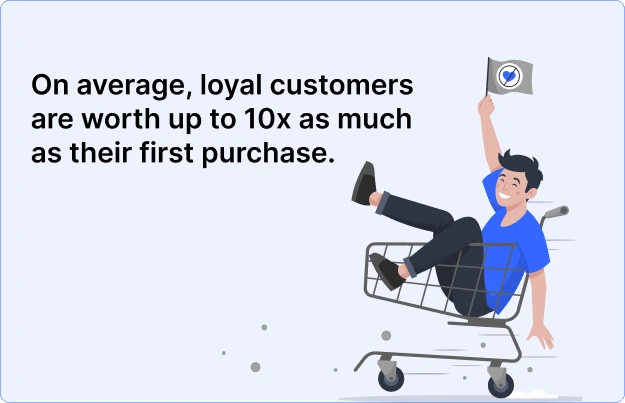
— Make customers know you exist
— Influence buyers early in the journey
— Guide them in a way that easily meets their needs
So, your business must take this stage as a springboard to win new customers and move them smoothly through to the next stages.
Tips to Reach Customers in the Awareness Stage
- Deliver the kind of content and resources aimed at proving detailed information about your business or products.
- Give customers how-to resources and videos to make them understand your business in a complete manner.
- Provide them access to the whitepaper, ebooks, industry reports, and checklist to make them feel comfortable in knowing your products and services.
- Make sure all the content is in a digestible form as it makes reading easy and helps buyers navigate through stages of customer journey easily.
2. The Consideration Stage: Prove You’re the Best Option
Customers will buy from you only when you come across it as the best option for them.
The consideration stage is the opportunity to show them you’re the best option. It’s the stage where you need to know customer pain points and deliver solutions for them.
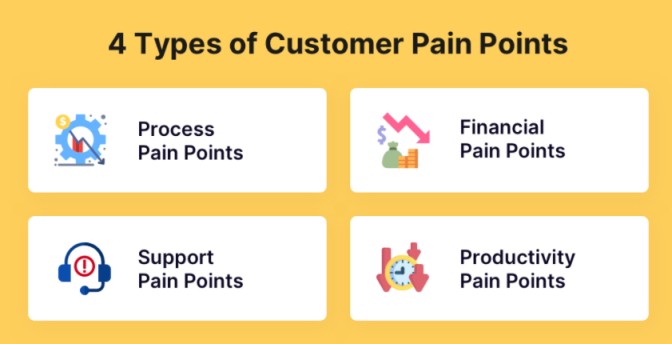
And if customers find you the right option, they won’t hesitate in engaging with your business.
And when they engage or show interest, you can always present them with the relevant information and compel them to make a decision.
In this stage, customers may do many things, like –
- Compare your offers to others on the market
- Do price checks and comparisons
- Read customer reviews
- Analyze offers from competitors
At this crucial stage when customers compare you to other options, you need to make sure your offers are clearly and easily understandable.
You also need to ensure that customers find you on the web quickly. Above all, you need to realize how about 95% of customers read reviews before making a purchase.
In a way, the consideration stage of the buyer’s journey is an opportunity for your brand to –
— Make the benefits of your products and service obvious.
— Present your products or services in a way that gives an edge over competitors.
— Ensure customers easily see through the competitive advantage you offer.
Tips to Reach Buyers in the Consideration Customer Journey Stages
- In the consideration stage, you have to reach customers knowing that they are continuing on their initial research and looking for a bit more information to get convinced about your products.
- Provide them specialized types of content such as demo video, case study, sample, FAQ to ensure complete information about your offers.
3. The Purchase Stage: Give Customers Reasons to Buy
Customers have done their research, they have compared options and now they are ready to make a decision. Or, the customer is ready to buy.
For such a crucial stage, you need an in-depth understanding of their buying motivation and have the right resources ready to make customers purchase from you.
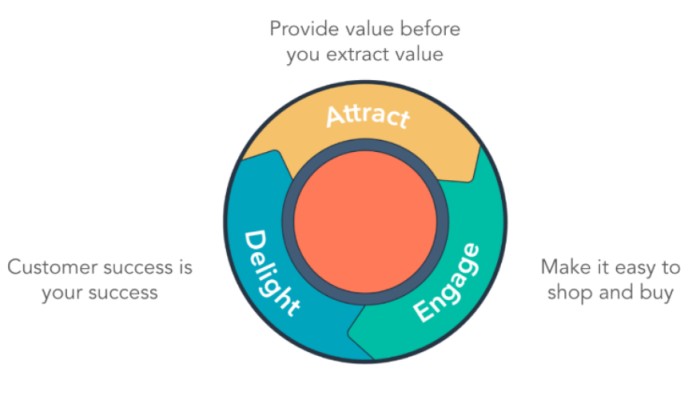
Source
Before buying anything, most customers nowadays prefer two things –
- A Free Trial
- A Live Demo
But what if your product or service does not include either of the choices?
In that case, you need to rely on different kinds of content to build confidence in potential buyers.
The easiest way is to show them social proofs or reviews as it will remove the doubts and may help win their trust.
Tips to Reach in the Purchase Stages of Customer Journey
- Focus on answering the question buyers often face at the time of purchase.
- Showcase social proofs of your product and service to positively influence the buying decision.
- Use genuine testimonials on your website from existing customers to give potential prospects some kind of confidence in your brand.
- Give buyers access to case studies so that they can understand the value your products or services are capable of providing.
- Give free consultation if that is a possibility to impact the purchase decision of your customers.
4. The Retention Stage: Get Customer’s Feedback and Acknowledge their Loyalty
It’s always easier and cheaper to retain existing customers than to win new ones.
And when you have won clients, the focus should always be on retaining them. And when you want to retain customers, you first need to build trust.
To build trust, you should regularly follow up with them and try to know what they think about your products and services.
Similarly, you need to ask for customers’ feedback and then work on it to improve their experience with your brand.
When you ask the feedback, it shows you are keen to ensure an amazing experience through different customer journey stages.
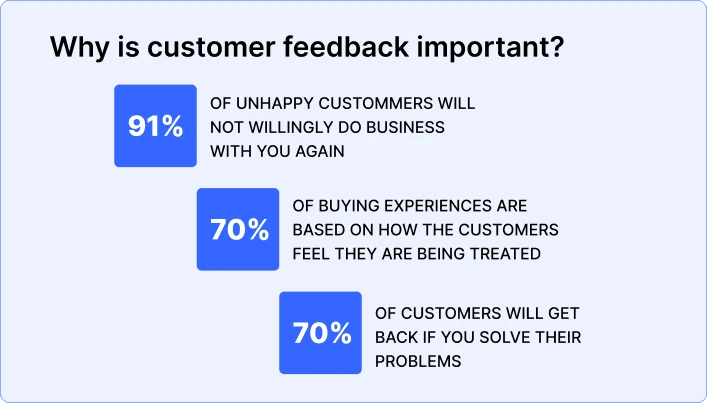
Tips to Reach in the Retention Stage of a Customer Journey
- Doing phone calls to follow up with customers is always a great strategy to get a good idea about their problems and experiences with your brand.
- In case customers face any issue, you can always send them how-to videos on your products or service and ensure value to them.
- You can always run surveys with the view to understand customers’ opinions about your products or to know their experience with your brand.
- It’s always a good practice to encourage customers for testimonials requests and then display them on the website.
5. The Advocacy Stage: Encourage Customers to Spread the Word
You have probably won the customers over when they start advocating for your brand.
However, customers will only say great things about your product or service when they are truly happy or satisfied with it.
In fact, happy customers often refer brands to others. So, at this stage, you need to think of ways to increase customer loyalty for your brand.
So, if you want customers to turn an advocates for your brand, make sure you-
- Listen to them
- Give value
- Show respect
- Ensure great experiences
- Solve the problem, if any
And if you manage to do all this through each stage of the customer journey, there is no reason why customers can’t go out of the way to spread the word about your brand. At the same time, make sure your support team benefits from the customer service checklist and does its job well.
How to Reach Customers in the Advocacy Stage?
- Devise an easy and enriching referral program so that customers feel encouraged to bring others to use your products or services.
- Display the opinions of customers on the website or social media to influence prospective buyers.
Steps in Mapping Customer Journey Stages
Mapping your customers’ journeys is always the key to guiding buyers in the right direction and delivering them consistent experiences. If your business takes care of customer journey map stages, it will fail to utilize the customer data, resulting in missed opportunities. So, you should work on understanding different stages of customer journey mapping to increase conversions and boost sales.
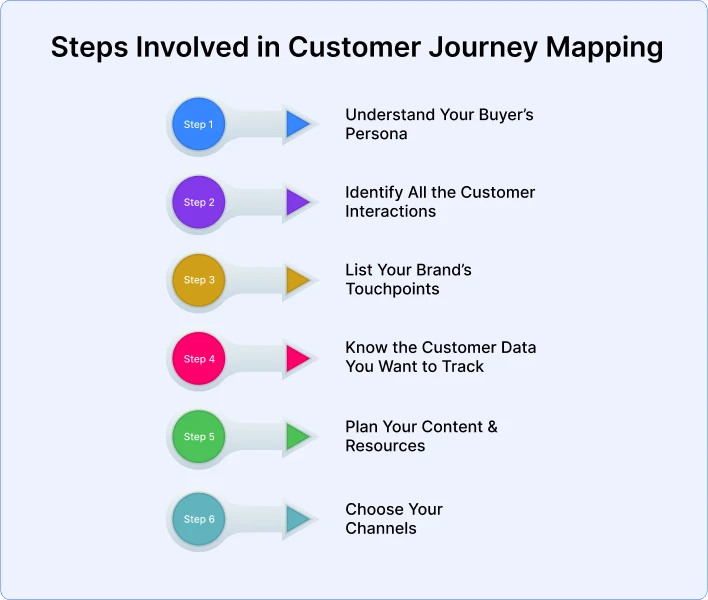
There are various steps stages involved in mapping customer journey stages.
- Understand Your Buyer’s Persona – Identifying the target audience is often the first stage in customer journey mapping. Unless you know your customers, how can you add value to their journey with your brand? You need to understand their behavior and know their expectations, needs, preferences. Once you and your team have created a buyer’s persona, it will always be easy to connect the dot and serve customers in the best way possible.
- Identify All the Customer Interactions – Your business is supposed to identify all the interactions a typical customer can have, right from the initial research stage to purchase to post-buying phases. Once you’re aware of the customer analytics and understand their progression through stages, you can always plan the offers and meet them at the best place in the journey.
- List Your Brand’s Touchpoints – Knowing all the touchpoints is one of the vital aspects of customer journey mapping. Each one of them will be a great opportunity for your business to enhance customer experience. Once you’re aware of the touchpoints, you can easily know the areas to work upon and ensure value to customers at each step of the way.
- Know the Customer Data You Want to Track – You need actionable data if you wish to optimize your customer journey. All the key customer-centric data — whether related to purchasing history, demographics, browsing history, social imprints, CTRs, etc, — must be streamlined to enable easy access to all the team members and departments. This data can be used to serve customers better and improve their experience with your business.
- Plan Your Content & Resources – Sharing relevant information at crucial stages of the customer journey can ensure value to the audience. You need to plan the resources in a way that ties in with the specific stage of the journey. Make sure you have a diverse range of content types to help customers through each step of the way.
- Choose Your Channels – Make sure your business is available across channels so that it can meet customers wherever they want. It’s important to devise an omnichannel communication strategy to enable seamless, personalized experiences across channels. If you give customers the choice to engage at their favorite channel, it can definitely improve their experiences.
Optimize Customer Journey Stages with REVE Chat
Customers expect to reach out to businesses in a smooth manner without facing any hiccups.
They also want to use the channel of choice in getting solutions to their problems. Plus, most of them expect quick responses to their queries.
At REVE Chat, we realize how brands need to deliver value at each step of the way so that customers can stick forever.
So, you can use our AI chatbots to help automate support and ensure quick replies to customers.
It’s also possible to design the bot with different conversational styles to boost engagement at various customer journey mapping stages.
In fact, you can deploy a powerful chatbot to track customer journey stages and get valuable data.
Similarly, live chat software can help deliver real-time support and engagement to boost customers’ experience with your business.
Final Thoughts
A business needs to have a solid understanding of the stages of customer journey mapping to provide value at each stage of the journey.
You can always think of using the power of AI bots and live chat software to automate support, respond quickly and ensure a smooth journey to buyers.
With REVE Chat, you sign up here and take the first step towards building your own bot or setting up your live chat.
Once you have the right tools and software at your disposal, it will always be easy to track customer journeys of any complexity.

